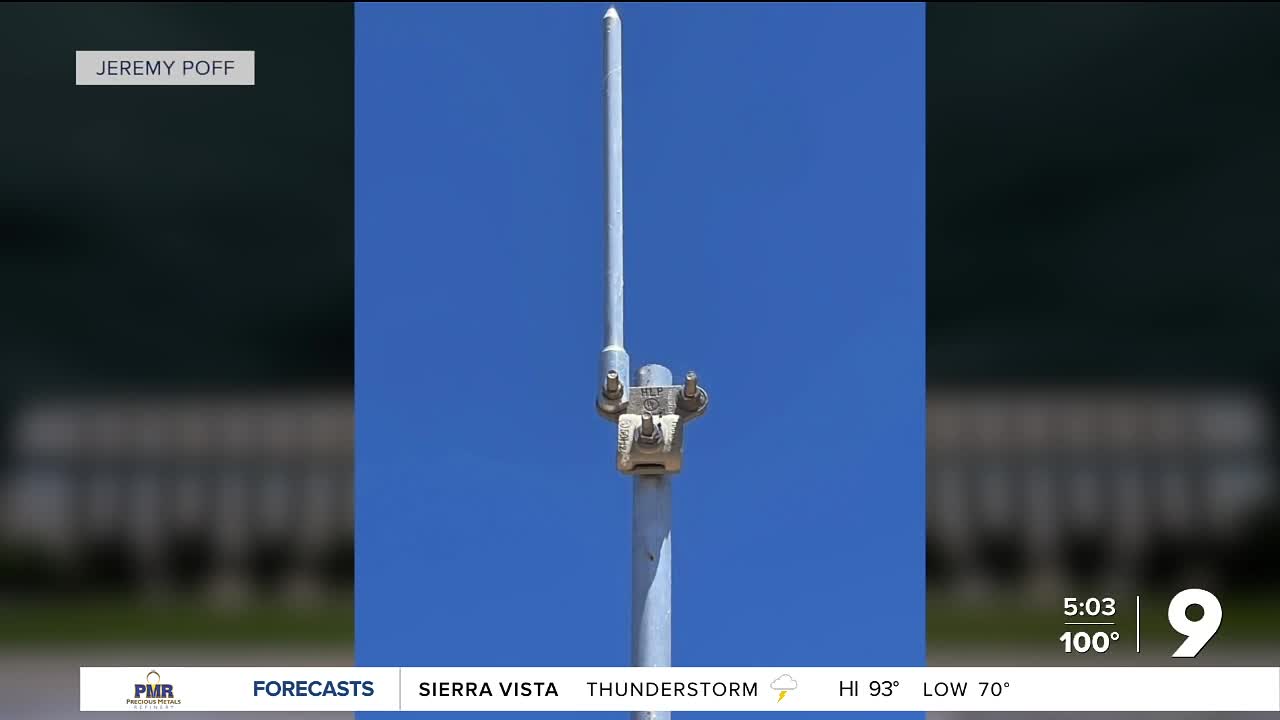TUCSON, Ariz. (KGUN) — As monsoon season sweeps across Arizona, lightning strikes become more frequent—and more dangerous. While commercial buildings are required to have protective systems, homes remain vulnerable unless owners take action.
Last week, KGUN 9 reported on a Foothills home that was struck by lightning, reigniting conversation about lightning protection for residential structures.
Arizona averages more than 600,000 lightning strikes per year, according to the National Weather Service. “They’re beautiful,” said April Madison, KGUN 9 meteorologist, “and we see up to 600 thousand — I think was the last average count.”
But beauty can be deceiving. “We can get the lightning before the rain, and that often times is what causes wildfires,” Madison added.
Wildfires aren’t the only concern. Homes and buildings hit by lightning can suffer electrical damage, fires, or worse. One proven solution: lightning rods, also known as air terminals.
“A lightning rod, per se, is just an air terminal made of, most commonly, aluminum and copper,” explained Jeremy Poff, owner and president of Classic Lightning Protection, Inc., an Arizona-based company specializing in lightning protection systems.
“They are designed to accept any strike coming from an electrical storm you may have in that area,” Poff said. “And then they dissipate the energy, at a low resistance and low heat, to ground.”
Classic Lightning Protection, founded in 1984 and based in Phoenix, installs and services lightning rod systems across the Southwest. The company follows standards set by the Lightning Protection Institute and the National Fire Protection Association.
While lightning protection systems are mandatory for large industrial and commercial buildings, they are not required in residential construction in Arizona.
“The reason it’s not as common on residential is because in residential there isn’t a building code requirement,” Poff said.
That means it’s up to homeowners and builders to decide whether to install the systems, which can be costly. “For an ordinary homeowner, around 3,000 square feet, you’re looking at just under 10 grand,” Poff noted.
As Arizona’s storm season intensifies, experts say awareness—and preparation—may be the best defense.
——
Eddie Celaya is a multimedia journalist at KGUN 9. Born in Tucson and raised in the Phoenix area, Eddie is a life-long Arizonan and graduate of the University of Arizona who loves the desert and mountains and hates the cold. Previously, Eddie worked in print media at the Arizona Daily Star. Share your story ideas with Eddie at edward.celaya@kgun9.com, or by connecting on Facebook or Instagram.

----
STAY IN TOUCH WITH US ANYTIME, ANYWHERE





